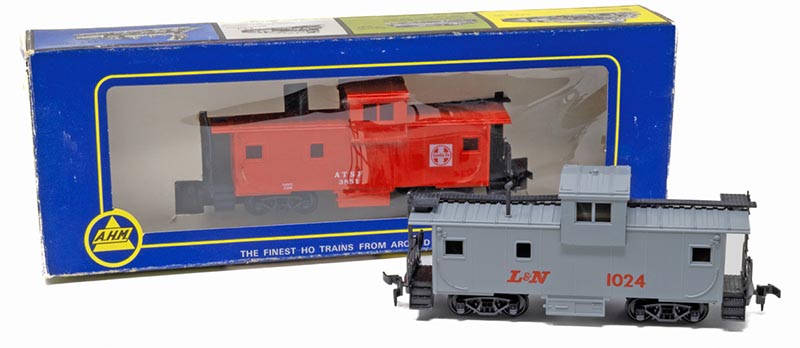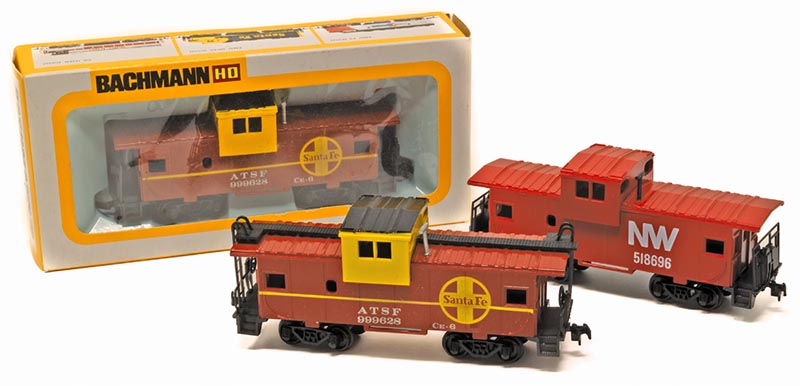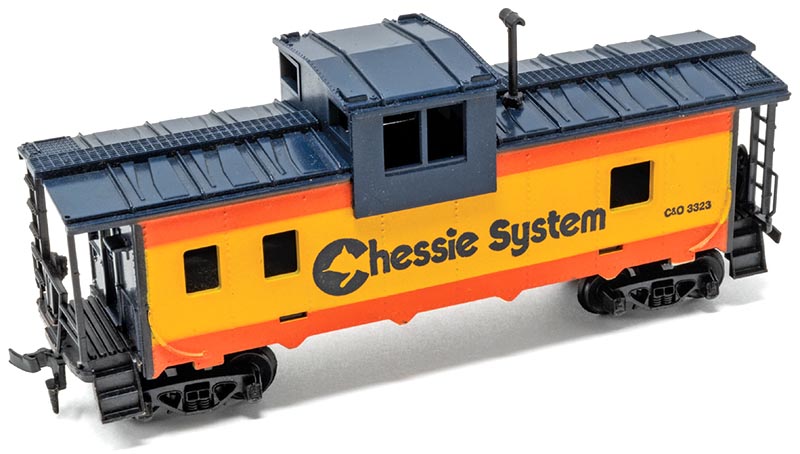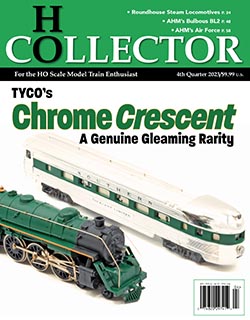Though extended- or wide-vision cabooses had been in service on North American railroads for many years, it wasn’t until the early 1970s that hobby manufacturers turned their attention to this popular waycar style. A flood of plastic reproductions began arriving from all around the globe and in varying degrees of quality.
The prototype wide-vision caboose styles included those built by car builders, like Ohio’s International Car Company, and home shop efforts created by railroads. The reign of this style caboose was approximately a quarter century with its sidelining (along with most all cabooses) in the 1980s with changes in North American railroading operations and rules.
In the onslaught of early 1970s plastic wide-vision caboose models, TYCO was not left out. The manufacturer’s most famous caboose is without question its streamlined, offset cupola example introduced in the late 1950s. The diminutive two-axle bobber caboose (originally a metal offering from Mantua) was also present in TYCO’s line for many years, though absent by the time the line added its wide-vision offering.

ABOVE: Roco produced this wide-vision caboose and it was originally marketed by AHM and later found in other lines.
The streamline cupola caboose has no prototype, and my belief is the Pennsylvania Railroad center-cupola with its streamline profile was selected and the move of the cupola away from the roof’s center was an attempt to make it resemble the more common steel-body offset cupola (like Athearn’s well-known “blue box” model, which is based on Santa Fe design). The bobber was noted as following a Reading prototype. This tooling returned in the 1980s as a second-generation Mantua offering.
Regarding TYCO’s wide-vision caboose, I do not know of a prototype to say it follows. The general appearance is typical of steel construction cabooses with this style of overhanging cupola placed slightly off center. A spotting feature or standout attribute is the length of this caboose. From end-to-end, TYCO’s wide-vision caboose measures nearly 39 feet, while a length of 35 feet is more common for HO cabooses of this style offered at the time TYCO cataloged its release.

ABOVE: Bachmann added a wide-vision caboose to its line in the early/mid-1970s. The model originally included roofwalks and ladders (shown on the Santa Fe model in the foreground); later a modernized edition came to the line (shown by the Norfolk & Western and boxed Santa Fe models).
The model’s road names include Canadian National (CN); Chattanooga; Chessie System; Chicago, Burlington & Quincy; and Santa Fe. TYCO’s red with white “wet noodle” CN caboose is believed to be a Canadian market-only release, while the silver Burlington Route (328-L) is the rare decoration for this model. The commonly found roads (Chattanooga, Chessie System, and Santa Fe) saw inclusion in TYCO’s annual catalog in 1975 in train set illustrations and separate sale listings. All returned in 1976 (except the wide-vision Chessie was only spotted in 1976 in “The Mammoth of the Rails” train set powered by a Chessie System 4-6-2 Pacific steam locomotive).
Beginning with TYCO’s 1977 catalog, you’ll only spot the wide-vision caboose in train set illustrations, and only shown decorated for Santa Fe; this situation repeated in the 1978 catalog. The model was completely absent in 1979 and later catalogs. None of the road names TYCO produced are exclusive to this wide-vision caboose body style and could also be readily found as decoration on the line’s streamline cupola model. Given the effort and expense invested in creating a new caboose tooling, it is a bit curious that its tenure was so brief in TYCO’s line.

ABOVE: Chessie System was a new railroad among U.S. Class Is, when TYCO introduced this wide-vision caboose model. There were many other Chessie System releases in TYCO’s line (including the streamline cupola caboose, several diesel locomotives, and even the 4-6-2 Pacific steam locomotive) and from other manufacturers of HO trains during the road’s early days.
The model consists of a body shell with separate single-piece cupola section and underframe (all made of injection-molded plastic). The underframe includes the end porch steps with plank pattern present on the porch surfaces. Added to the underframe are end railings, ladder, and brake stand with wheel (molded in a flexible styrene). This end detail (the same design provided on both ends of the caboose) is the more intricate area of this release. The brake stand and wheel are two pieces and fit into the porch surface. The handrailing and ladder is another piece and fits into openings on the porch surface and the up-per parts secure themselves to the overhang of the caboose roof by snapping into place…




